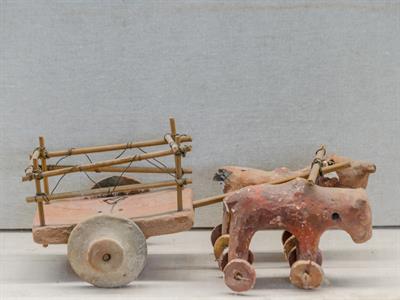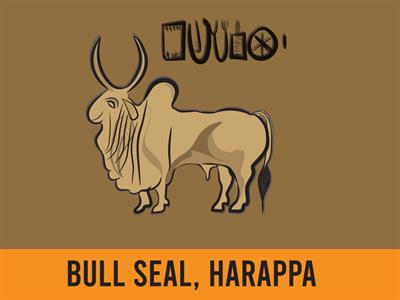PDF chapter test TRY NOW
People of the Indus Valley civilization make a living by selling various products and agriculture and hunting. The people of the Indus Valley were highly dependent on trade. Persia, Mesopotamia, and China were among the civilizations they interacted with. Some goods traded in huge quantities were terracotta pots, semi-precious beads, gold, silver, lapis lazuli, and coloured gems like turquoise, metals, flints, seashells, and pearls.

Terracotta Toy
Standard weights and measures were used by the Indus Valley civilisation people daily in their business transactions. Harappan Civilization used a system of weights involving small stone cubes as a weighing object. Limestone and steatite are used to make these weights.
The occupation of city workers includes things as pot making, bead making and cotton cloth manufacturing. Traders brought the raw materials workers needed and took away finished goods to trade in other cities.

Terracotta pots, beads, gold and silver, coloured gemstones such as lapis lazuli and turquoise, flints, metals for making stone tools, seashells for shell ornaments, and pearls are some of the items traded.
Minerals used by Indus people were imported from Afghanistan and Iran. Copper and Lead come from India. Jade comes from China, and cedar tree wood is floated from rivers of the Himalayas and Kashmir.
Trade
Traders had trade contacts in the country and also with other countries such as Babylon, BabylonPersia, Mesopotamia, Afghanistan and Egypt. Indus Civilisation is considered as the first civilization to use wheeled transportation. Advancement in transportation technology led to the invention of bullock carts and boats.
All of the trade was conducted through the Barter System, exchanging goods or services for other goods or services without using a currency.
The people of Indus used camels, oxen and elephants to travel overland. They also had bullock carts with wooden wheels attached. They also had ships with one mast which is believed to have sailed around the Arabian Sea.
